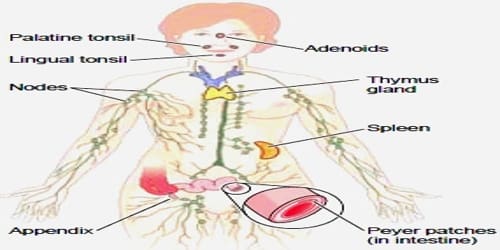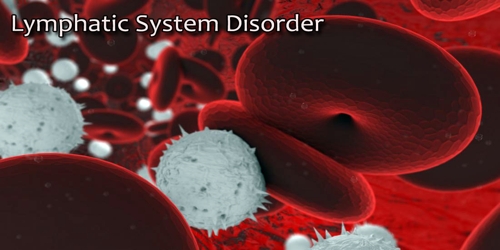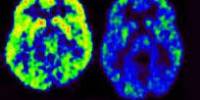Lymphatic System Disorder
Definition: The lymphatic system is part of the immune system. It also maintains fluid balance and plays a role in absorbing fats and fat-soluble nutrients. It was first described in the seventeenth century independently by Olaus Rudbeck and Thomas Bartholin.
Lymph originates in the Classical Latin word lympha “water”, which is also the source of the English word limpid. The spelling with y and ph was influenced by folk etymology with Greek νύμϕη (nýmphē) “nymph”.
There are about 600 lymph nodes in the body. These nodes swell in response to infection, due to a build-up of lymph fluid, bacteria, or other organisms and immune system cells.
Lymphocytes are concentrated in the lymph nodes. The spleen and the thymus are also lymphoid organs of the immune system. The tonsils are lymphoid organs that are also associated with the digestive system. Lymphoid tissues contain lymphocytes, and also contain other types of cells for support.
The lymphatic system has three main functions:
- It maintains the balance of fluid between the blood and tissues, known as fluid homeostasis.
- It forms part of the body’s immune system and helps defend against bacteria and other intruders.
- It facilitates absorption of fats and fat-soluble nutrients in the digestive system.
The system has special small vessels called lacteals. These enable it to absorb fats and fat-soluble nutrients from the gut.

Diseases and Disorders of the Lymphatic System:
Diseases and disorders of the lymphatic system are typically treated by immunologists. Vascular surgeons, dermatologists, oncologists, and physiatrists also get involved in the treatment of various lymphatic ailments. There are two common disorders affecting the lymphatic circulation – either water retention in tissues due to impaired lymphatic drainage, or swelling of the lymph nodes. Both of these disorders can arise from a number of causes, from injury to the vessels and nodes, to infection or cancer.
- Lymphedema – Lymphedema can arise from some medications, radiation therapy, infections due to bacteria or even parasitic worms. Lymphatic filariasis, also known as elephantiasis, is a common disease in many tropical countries, which spreads through mosquito vectors. The causative agents are nematodes with a large proportion being caused by Wuchereria bancrofti and Brugia malayi. Occasionally, other diseases such as tuberculosis, leprosy, or repeated strep infections can also cause lymphatic drainage to be affected, and result in lymphedema.
- Lymphoma – Lymphoma is cancer of the lymph nodes. It occurs when lymphocytes grow and multiply uncontrollably. Most often lymphomas are diagnosed after a painless enlargement of a lymph node is detected. While there are many subtypes of lymphomas based on cell type and location, two main categories are Hodgkin’s lymphoma and non-Hodgkin’s lymphoma. Interestingly, intense itching is a common early symptom of lymphoma. It is likely mediated by small molecules called cytokines that can act as neuromodulators, therefore creating the sensation of itching.
- Lupus – Lupus is an autoimmune disorder where the cells of the immune system attack body tissue. Lupus can present differently in each person since it can involve practically every tissue in the body. Joint pain and fatigue are common symptoms. As the disease progresses, lymph node enlargement is also commonly seen.
Diagnosis and Treatment: Diseases of the lymphatic system are usually diagnosed when lymph nodes are enlarged. This may be discovered when the lymph nodes become enlarged enough to be felt (“palpable lymphadenopathy”) or are seen on imaging studies such as CT scans or MRIs.
Common symptoms of any lymphatic disorder include swelling of the arm or groin, weight loss, fever and night sweats. The diagnosis of lymphadenopathy depends on the location of the abnormal lymph nodes and other things that are going on with the patient.
Treatment of lymphatic diseases depends on treating the underlying cause. Infections are treated with antibiotics, supportive care (while the immune system does its job, as in a viral infection) or antivirals. Lymphedema can be treated by elevation, compression, and physical therapy. Cancers of the lymphatic system are treated by chemotherapy, radiotherapy, surgery, or a combination of those modalities.
Information Source:
















